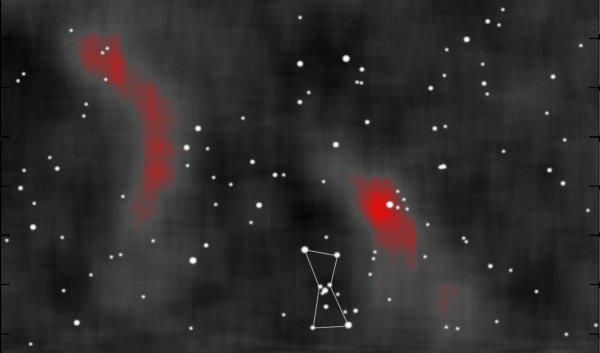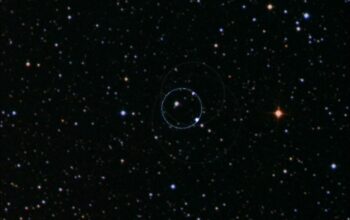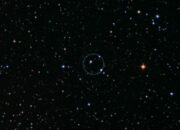The cosmos is a grand tapestry woven from the most enigmatic threads of nature, each fiber representing the fundamental particles that populate our universe. Among these, cosmic rays stand out as particularly peculiar entities, presenting a conundrum that has both fascinated and baffled physicists for decades. These high-energy particles, originating from vast distances beyond the solar system, traverse interstellar space and collide with the Earth’s atmosphere at near-light speeds, manifesting a mystery that deepens with every new discovery.
At their core, cosmic rays consist predominantly of protons, but they also include heavier nuclei and even electrons. Their origins stretch from our own Sun to the most violent astrophysical processes known, such as supernovae, black hole accretion disks, and the remnants of neutron star collisions. Yet, the question remains: why is there an unrelenting flux of these particles, and what precisely accelerates them to such extraordinary energies?
The first intriguing metaphor that emerges in this cosmic journey is that of an intergalactic race. Cosmic rays, like sprinters, emerge from various celestial accelerators, propelled by energetic events that release unimaginable amounts of energy. For instance, supernovae, the catastrophic deaths of massive stars, act as potent engines, hurling particles into the void at exceptional velocities. Furthermore, active galactic nuclei—regions at the centers of galaxies that harbor supermassive black holes—exemplify another avenue of particle acceleration, characterized by their extreme gravitational fields and magnetic forces.
The observable phenomena associated with cosmic rays reveal themselves in the vibrant displays of air showers. As these high-energy particles collide with atoms in the Earth’s atmosphere, they ignite a cascade of secondary particles, forming luminous bursts akin to dazzling fireworks in the night sky. These showers can be detected on the ground, teaching us invaluable information about their elusive progenitors. Despite this, the precise composition and origin of the highest energy cosmic rays, which exceed 1020 electronvolts, remain an open question, casting an ethereal shadow over our understanding of fundamental physics.
Historically, cosmic rays were first discovered in 1912 by Victor Hess, a pioneering physicist who ascended to the stratosphere in a balloon. His discoveries unveiled that high-energy particles were not merely products of terrestrial phenomena, but rather components of the cosmos itself. This revelation stimulated inquiries that lead to the establishment of astroparticle physics, a field that synergizes astronomy and particle physics to unravel the universe’s most profound mysteries.
One pertinent quest in this field concentrates on the elusive nature of ultra-high-energy cosmic rays (UHECRs). These particles, with energies exceeding those attainable by contemporary human-made accelerators, challenge our existing models of particle acceleration and propagation through the universe. The detection of these cosmic emissaries often occurs via extensive air shower arrays or space-based observatories, allowing scientists to map their trajectories and infer their potential sources. Each detection hints tantalizingly at astronomical phenomena yet to be fully understood, contributing to a cosmic narrative that is still unfolding.
Complicating matters further is the challenge of cosmic ray composition. A significant shift in the understanding of cosmic rays emerged with observations indicating that they are not a uniform population. Different sources may contribute variable energy spectrums and elemental compositions. Consequently, this heterogeneity poses formidable questions—do different sources accelerate particles differently? How do the environmental conditions in these accelerators influence the resultant particles? Such questions reverberate through the halls of academia, prompting rigorous examination and theorizing.
Moreover, the interaction of cosmic rays with the interstellar medium bears implications that reach far beyond mere particle astrophysics. These energetic particles play a considerable role in cosmic ray probing, coupling with the gas and dust in galaxies to influence star formation and galactic evolution. The potential for cosmic rays to serve as carriers of information about the processes occurring in star-forming regions introduces the notion of cosmic rays as messengers, bridging disparate scales in astrophysics—from the minute behavior of particles to the grand dynamics of galaxies.
Recent advancements in experimental techniques have enabled a deeper comprehension of cosmic rays, yet the mystery surrounding them remains profound. The ongoing operation of observatories such as the Pierre Auger Observatory and the IceCube Neutrino Observatory serves as testament to humanity’s relentless pursuit of knowledge, collecting data that continue to refine our understanding of these enigmatic particles. Each piece of information serves not only as a puzzle piece but also as a catalyst for new inquiries, pushing the boundaries of theoretical frameworks.
The quest to decipher the cosmic ray conundrum is emblematic of the broader human endeavor—an incessant desire to grasp the known and unknown. As contemporary physicists probe ever deeper into the complexities of cosmic rays, they are reminded of the delicate balance between enlightenment and the mysteries that elude comprehension. Each discovery serves as both a triumph and a reminder of the vastness of what remains uncharted.
In conclusion, as researchers venture forth into this cosmic puzzle, it becomes evident that cosmic rays are not merely particles; they are illustrious storytellers of the universe. Through their paths, we glean insights into the most violent and impressive phenomena that unfold at the fringes of our understanding. The cosmic ray mystery may deepen, but with every question raised, we draw closer to unveiling the intricacies of the universe’s grand design.










